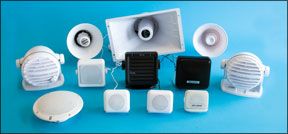
Past tests of nearly 30 fixed-mount VHF radios (July 15, 2005; Sept. 1, 2005; Dec. 1, 2005; March 2006) give ample indication that adding an extension speaker can greatly enhance the audio performance of many radios. Extension speakers, when used in conjunction with a remote microphone (November 2007), effectively add a second station to your VHF radio. The increased sound level available, enhanced audio quality, and ability to transmit and receive some distance away from the mounted radio all provide good reason to investigate adding an extension speaker to your boat.
What We Tested
We rounded up a dozen external speakers compatible as an add-on to most any fixed-mount VHF radio. We tested both the standard and horn style of speaker.
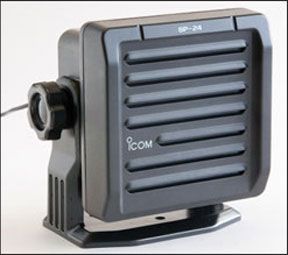
Our biggest product contributors were marine audio system experts Poly-Planar and antenna giant Shakespeare. Together, they made up half the field, each with three models included in the test. We also tested two from VHF radio maker Standard Horizon and two from technology specialist Speco. One speaker from SeaBowld and one from top-rated radio maker Icom (July 15, 2005 and March 2006 issues) rounded out the field.
We selected a top pick in both the conventional and horn-style extension speakers because space and styling constraints might restrict the use of one or the other on certain boats. Horn speakers are generally more efficient speakers than conventional speakers, and our tests proved this.
ICOM
The black plastic box-shaped SP-24, the same speaker shipped with one of Icoms single sideband radios, provided performance at the low end of our test groups performance range even though it was in the middle of the pack size wise. It did however pass our spray test even though it is not rated as waterproof.
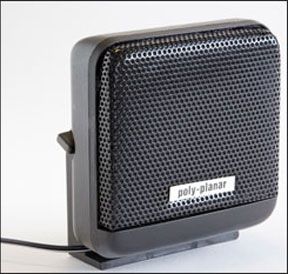
Bottom Line: Average performance coupled with a steep price would steer us clear.
Poly-Planar
All three Poly-Planar speakers in our test are rated as waterproof and all proved their mettle by passing our spray test with ease. This trio is available in either black or white plastic. The MB-series speakers use a square enclosure with minimal depth to maximize the sound reproduction capability of the internal speaker. For their size the pair performed about average in sound pressure levels with the MB-21 getting a Good sound quality rating and the MB-41 the only Excellent. The smaller MB-21 speaker uses a thin metal bracket and small knobs to lock the speaker in place. We had some trouble tightening the knobs because they are so small and inaccessible. The larger MB-41 uses a plastic bracket with easier to reach knobs. The MA-1000R speaker, designed to be flush mounted in a panel or bulkhead, achieved Good sound quality ratings while trailing the field in measured sound pressure.
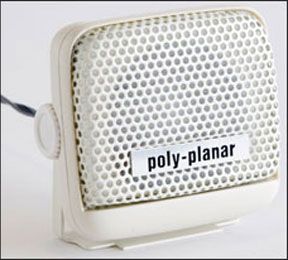
Bottom Line: The compact design, excellent sound quality, and two-year warranty earn the Poly Planar MB-41 the Practical Sailor Best Choice rating for conventional-style speakers. Its maximum output was measured at 89 decibels (dBA), comparable to a two-stroke chainsaw (85 dBA).
Sea Bowld
The inexpensive Sea Bowld VHF-100 appears to be identical to the Shakespeare ES-2. It performed about the same too, by passing the spray test, managing to be within 2 decibels of sound pressure, and by getting a Good sound quality rating. The bracket does not have knobs but rather uses tension created by the plastic bracket to hold the speaker in place.
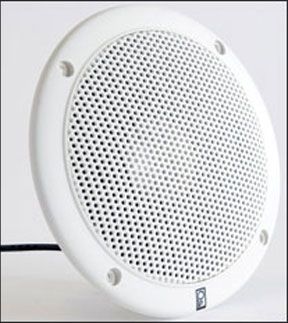
Bottom Line: A compact speaker with decent performance, available at an inexpensive price.
Shakespeare
Our three test units from Shakespeare are rated as weatherproof and passed the spray test with no glitches. The ES-series speakers use a box shaped enclosure with minimal depth to house the speaker. Compared to others of similar size both perform very well, hitting the highest numbers for sound pressure. The pair also received Good sound quality ratings. One thing we didnt like about the ES-2 was the lack of any locking knobs to firmly hold the speaker on the bracket. Only the tension of the plastic bracket keeps the speaker box in place. The larger ES-4 uses a lightweight thin metal bracket that did not appear as secure as some others.
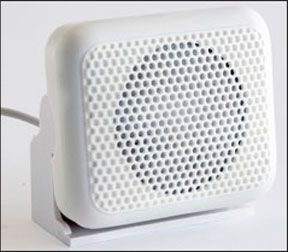
The horn-style speaker from Shakespeare, designated the HS-5, blasted out an astounding 104 decibels of sound and received a Good sound quality rating. It earned a top pick with its construction quality, weather resistance, loudness, sound quality rating, and price.
Bottom Line: The Shakespeare HS-5 earns Best Choice for horn-style speakers with its high volume and good sound quality, all at a reasonable price.
Standard Horizon
The pair from Standard Horizon, the MLS-300 and MLS-310, are similar in style and appearance and both are available in either black or white plastic. Each has a round face with a grille front, and compared to others in the field are a little bit on the large and bulky side. They can be mounted flush with supplied hardware or using a brawny plastic bracket with large diameter knobs that lock the speaker enclosure securely in position. The MLS-310 housing is several inches deeper than the MLS-300 to accommodate the internal 10-watt amplifier. The addition of this amp mandates an extra electrical connection to a DC power source for this unit. Both units are rated as submersible by the manufacturer and passed our spray test with ease. We rated the pair Good for sound quality. The amplifier in the MLS-310 boosted its sound pressure output to 4 decibels over the speaker-only equipped MLS-300.
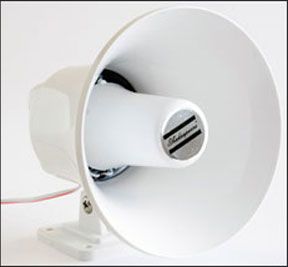
Bottom Line: A versatile mounting system, good performance, and a reasonable price get the Standard Horizon MLS-300 the nod as a recommended product.
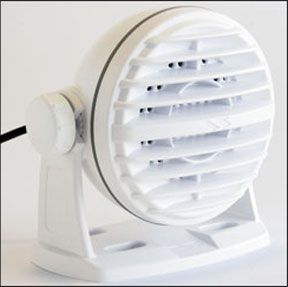
Speco
Both units from Speco were efficient horn-style speakers. The smaller round unit, the SPC-5P, was one of the least expensive units in the field. Even though it was rated as weatherproof, its performance suffered following the spray test. After it got wet, the SPC-5P was difficult to hear. It had a scratchy sound and irregular volume control. We rated it Fair for sound quality.
The much larger SPC-40RP/4 horn has been on our arsenal of test gear for several years. We decided to add it to this review because it fell within the price range of several smaller speakers. It is rated as weatherproof and passed the spray test with no problems. This is a powerful horn and blasted out 104 decibels of sound even with the low-powered amplifier we used for testing. Keep in mind this speaker is able to couple to amplifiers with up to 40 watts or output power. Even though we think this unit is better suited for use as a hailer horn rather than a VHF extension speaker, it could be used for one on a large vessel with lots of room.
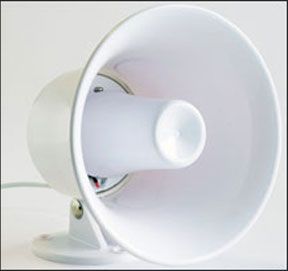
Bottom Line: Neither Speco unit shined enough to earn a buy rating, but Speco was one of only two speaker makers that offer a two-year warranty period.
Conclusions
We picked the Shakespeare HS-5 as our top horn-style speaker because of its good sound quality, the overwhelming sound pressure levels it was able to attain, and its extremely reasonable price tag.
The Poly Planar MB-41 was our top pick in a conventional speaker. This unit provided excellent sound quality, decent overall sound pressure levels, a two-year warranty, and pricing inline with its closest competitors. We also recommended the Standard Horizon MLS-300 and the Shakespeare ES-4, both of which had good sound quality and sound pressure levels along with realistic prices.

































